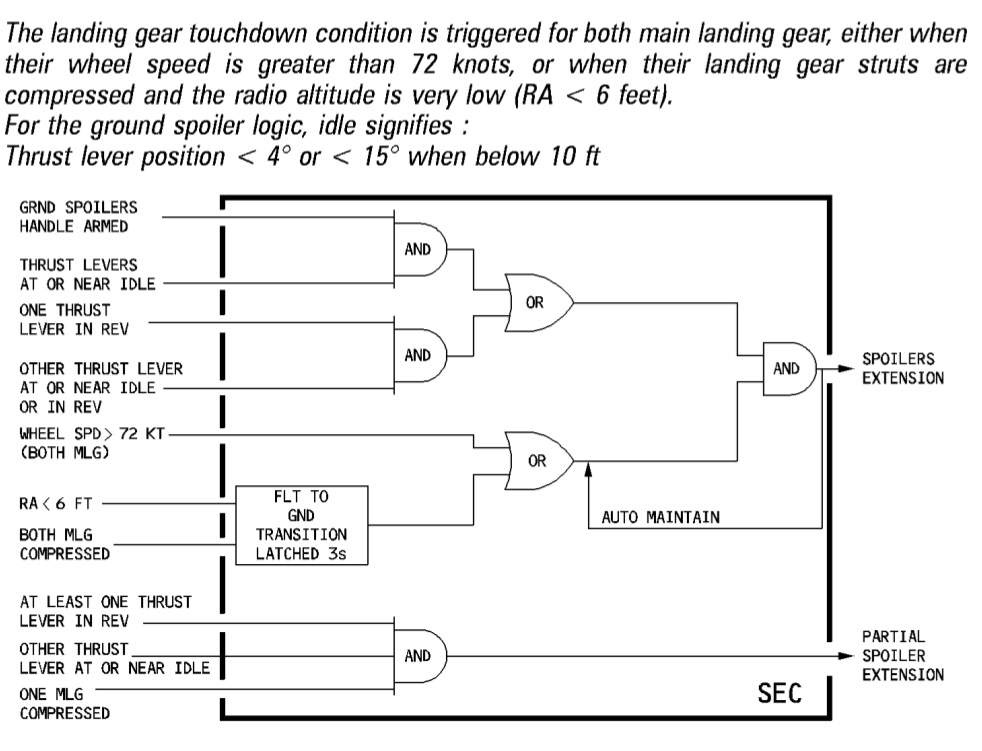According to the A320 FCOM the ground spoilers are extended full at landing when
both main landing gears have touched down, when:
- Ground spoilers are armed and all thrust levers are at idle, or
- Reverse is selected (on at least one engine, other thrust lever at idle), if ground spoilers were not armed
The ground spoilers also partially extend (10%) when reverse is selected (on at least one engine, the other thrust lever at or near idle) and one landing gear is compressed. This is to help the other landing gear to touch down, thus triggering full extension.
Here is the flowchart from the FCOM:
 source: A320 FCOM
source: A320 FCOM
In the case of the TAM accident, this is pertinent to the investigators’ conclusion because the pilots indicated on the CVR that the spoilers did not extend. This gives a clue as to the position of the thrust levers. The spoilers should have extended at touchdown if both levers were at idle or when reverse thrust was selected if the other lever was at or near idle. The fact that they did not extend reveals that one of the levers was not at or near idle.
This might have resulted from the captain using the old procedure for landing with a reverser disabled and he would have had a good reason to do that. The updated procedure, which was to move the levers as if both reversers were working resulted in a slightly longer landing distance than the old one (approx. 55 meters). Knowing he was landing in wet conditions it would be reasonable for him to want all the distance he could get.
It’s also reasonable to conclude he could have left a lever in climb position. The very reason Airbus had changed the procedure, even though it extended landing distance, was because pilots had made that mistake before. In the high-workload conditions at landing pilots were prone to a cognitive error of thinking that they only needed to move one lever because the other reverser was not working. In other words, during the several steps to moving the levers, on one step you move only one of them. When thinking quickly pilots would sometimes do that on the wrong step. On this occasion, combined with the poor runway condition, it resulted in disaster.

